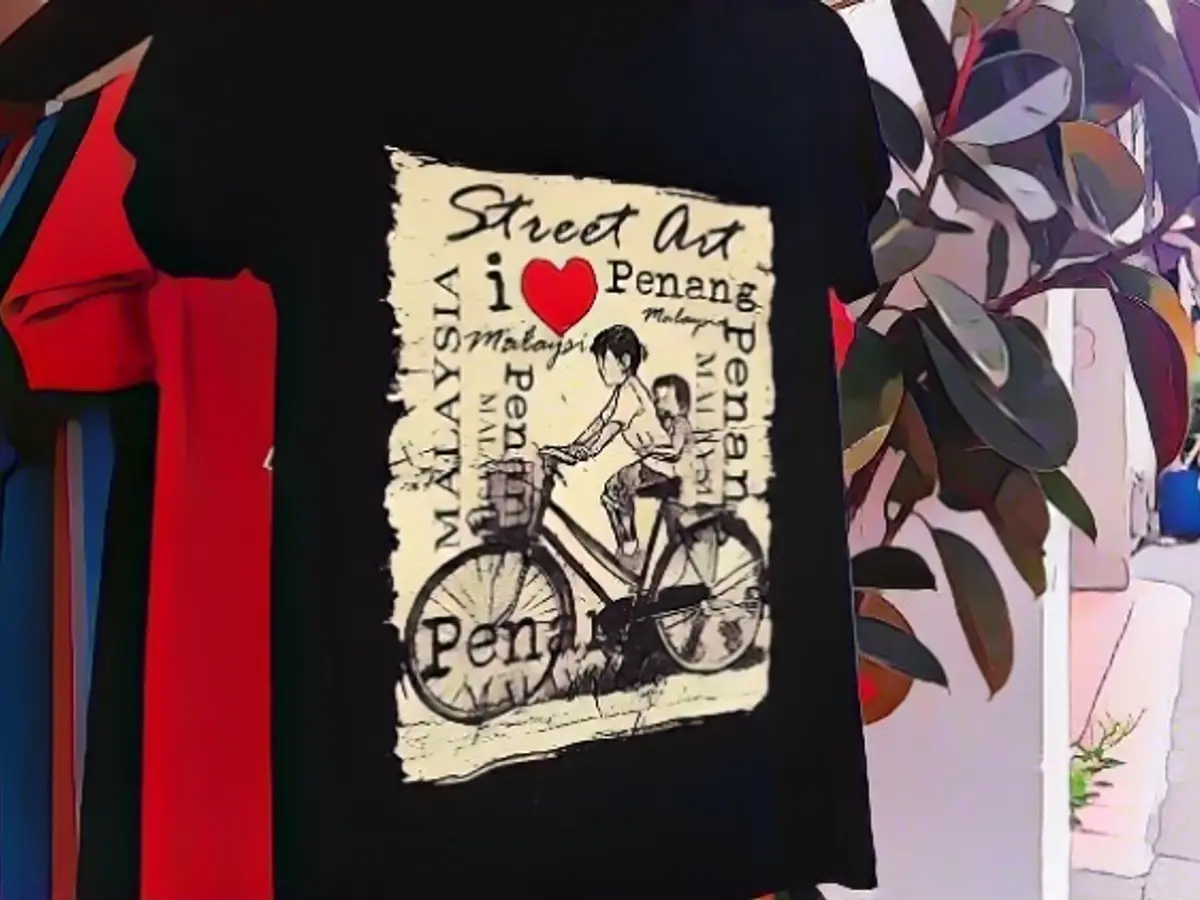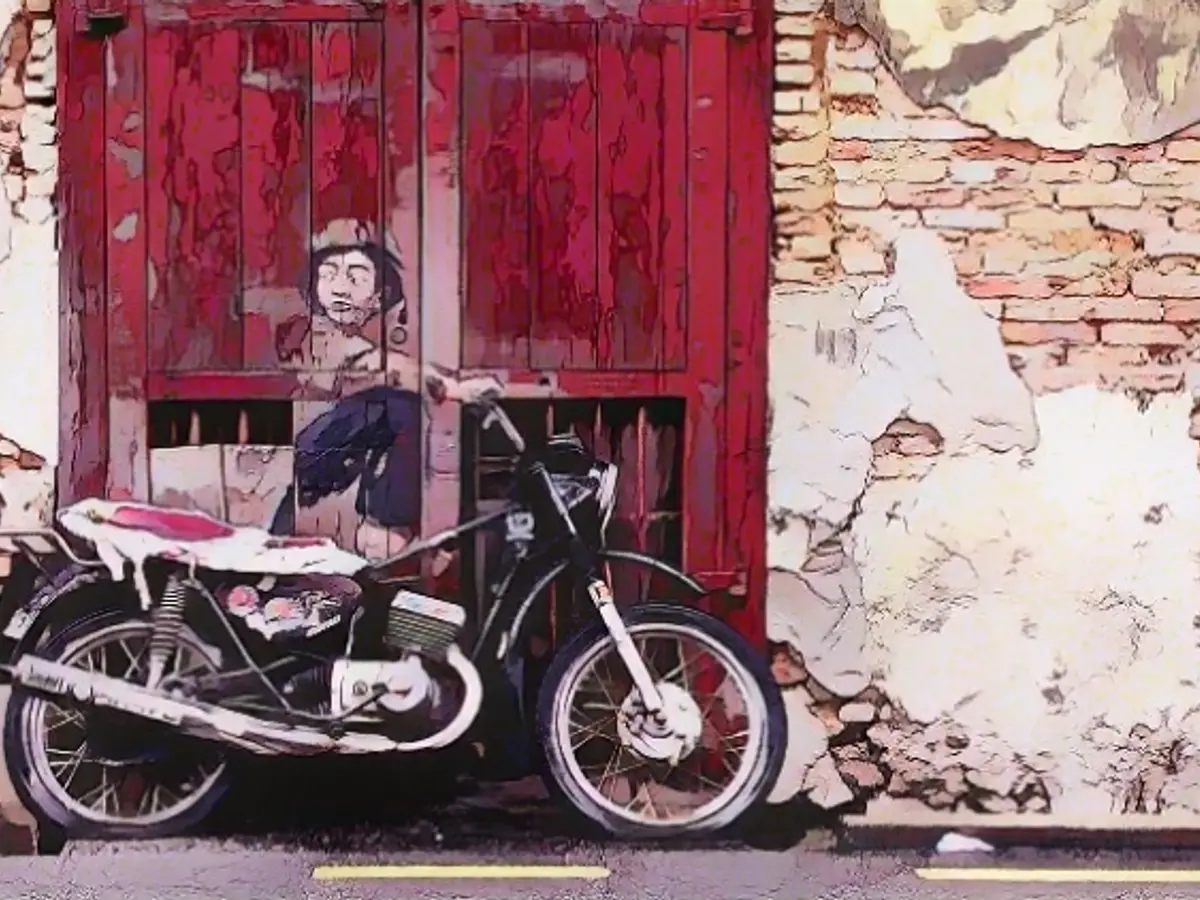Penang is a mecca for street art fans
Penang? The name is probably hardly familiar to many people in Germany. But the street art scene on the Malaysian island is causing a sensation. A motorcycle, a bicycle and laughing children play a special role.
Dozens of tourists have gathered in front of the red side door of an old Chinese store with a kind of street map in their hands. A mural shows a boy with an old military helmet on a motorcycle, looking over his right shoulder at the street. The special feature: Only the boy is painted, the motorcycle is real. Smartphone cameras click, a man leans against the saddle of the black bike for the perfect photo. "Boy on a bike" is one of the most famous works of the Penang street art scene in the northwest of Malaysia.

Street art is a global phenomenon. The spectrum ranges from illegible graffiti scrawls to the legendary Banksy, whose works dominate auctions worth millions. On the island of Penang, with its capital George Town, there is plenty of street art to admire and it has become a major attraction. The patina on the historic walls of the UNESCO World Heritage Site George Town has been transformed into a canvas for modern and often interactive art - a fascinating mix that delights visitors from all over the world.
"Street art is what put Penang on the world stage," says 48-year-old nurse Sudha Kanisan, who has spent her entire life on the island. It all began in 2012, when Lithuanian-born artist Ernest Zacharevic created his first murals as part of the George Town Cultural Festival. The works - a mixture of installation and painting - struck a chord and subsequently inspired local artists in particular, who also immortalized themselves on the historic walls. Today, George Town looks like a single open-air art gallery.
Without artistic boundaries
"In college, I became friends with someone from Penang. I stopped by on a Chinese New Year to see her and hang out," recalled the now 37-year-old Zacharevic in an interview with "Time Out Penang" in 2016. Then he simply stayed - a good decision: the series he created during the festival made him famous in one fell swoop - especially the works "Children on Bicycle" and "Boy on Motorcycle". Shortly afterwards, the BBC celebrated Zacharevic as "Malaysia's answer to Banksy".
Two children sit laughing on an old bicycle. The little boy clings to his big sister. Here, too, the children are painted, the bicycle is real. A woman poses for a snapshot and pretends to nudge the bike. The online magazine "Street Art News" described Zacharevic's unique style as follows: "He removes the restrictions of artistic boundaries and moves freely between the disciplines of oil painting, stencil and spray, installation and sculpture."
Based on this, local street artist Louis Gan later created "Brother and sister on a swing", which shows two laughing siblings on a swing on a half-ruined wall. He installed a real swing next to it. "This is by far the most exciting mural to appear in George Town since Ernest Zacharevic came on the scene," says the Travel Tips Penang website. Also eye-catching are dozens of wire caricatures scattered throughout the city, blending history with humor.
History and urban art
Penang, also celebrated as the "Pearl of the Orient", is a colorful mix of different eras, cultures and religions. The island was once an important British trading post in Southeast Asia. Colonial buildings from this period alternate with Chinese shophouses, Buddhist temples, churches and mosques. And the tempting aromas of food stalls waft through the tropical air everywhere. Penang has been a World Heritage Site since 2008.
Some compare a walk through George Town to a treasure hunt. But instead of gold and jewels, the search is for urban art: There are detailed maps to guide tourists through the labyrinth of alleyways. Every work of art that has been located and photographed is ticked off as if on a checklist. Some of the paintings are so famous that they adorn T-shirts, bags or fridge magnets in the souvenir stores.
The interesting thing is to understand the story behind each work of art," says Kirsten Müller, a tourist from Austria. "Sometimes we use the internet to find out more about the individual images, and sometimes some of the background is contained in the artwork itself." It is fascinating to look at Penang through the eyes of these artistic narratives, emphasizes the 65-year-old.
It is not uncommon for visitors to have lively conversations with locals to better understand the cultural nuances of street art. The walls of George Town do not divide, they connect. Colorful and cheerful, they build a bridge between yesterday and today - or to put it another way: the colorful brushstrokes have breathed new life into Penang's crumbling patina.
Read also:
- Snow chaos further restricts Bavaria
- "Zoltan" sweeps across the country - disruptions to rail traffic
- "Zoltan" brings masses of water, rail chaos and suspected tornadoes
- Heavy rain and snow expected after storm depression
The international popularity of Penang's street art has led to the creation of merchandise, such as T-shirts, featuring famous murals. Many tourists, including those from Germany, flock to see these artistic displays and take photographs.
Visitors from around the world are drawn to Penang, not just for its historical sites and cultural diversity, but also for its vibrant street art scene. The unique combination of history and urban art makes George Town a must-visit destination.
Source: www.ntv.de






